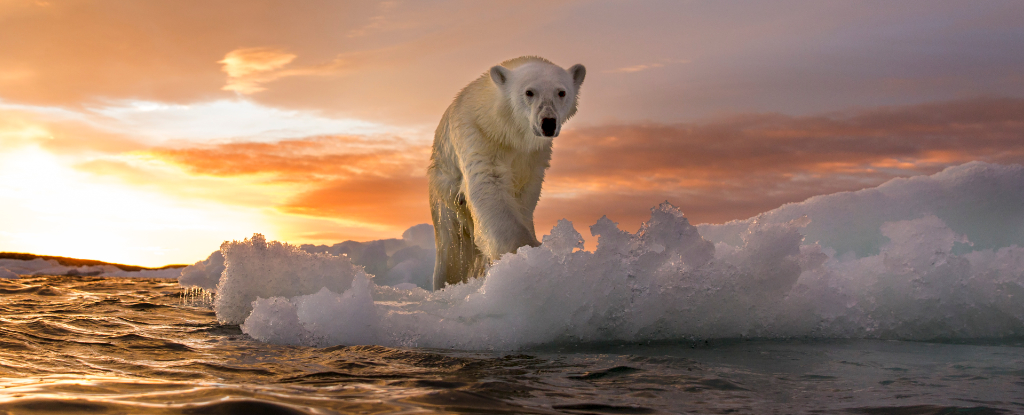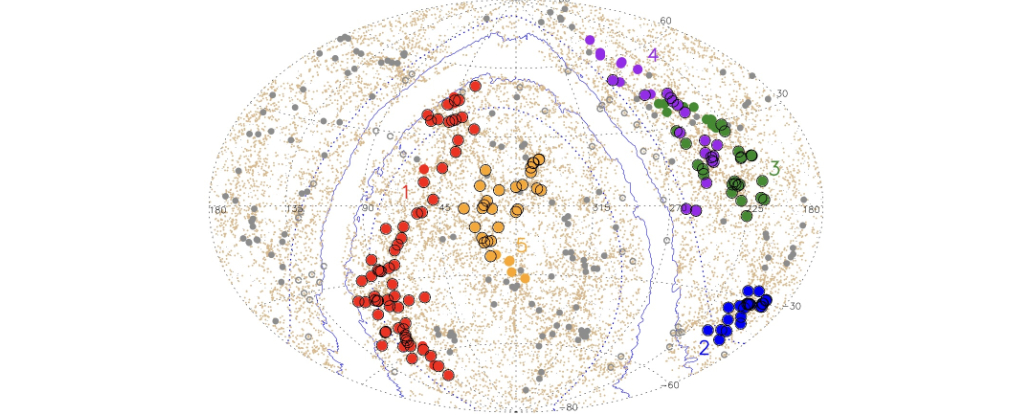ARTICLE AD
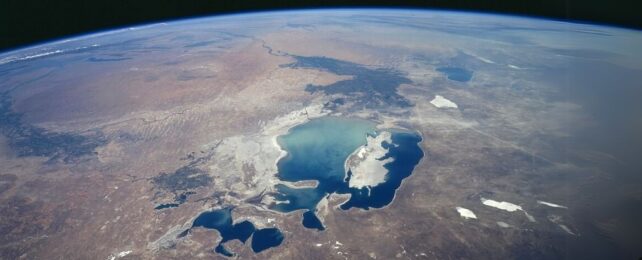 In the '90s scientists predicted that much of the Aral Sea's large southern basin (top here) would disappear by 2020. (NASA)
In the '90s scientists predicted that much of the Aral Sea's large southern basin (top here) would disappear by 2020. (NASA)
Before the 1960s, the fourth largest lake on Earth glistened for miles across the borders of Uzbekistan and Kazakhstan.
By 2015 most of that shiny surface was reduced to a hauntingly barren expanse, birthing the world's newest desert and impacting 3 million people that live in the surrounding region.
The Aral Sea once spanned 68,000 sq km (26,000 sq mi), but reports now suggest all that currently remains is a few slithers amounting to about 8,000 sq km of water. The rest of its bone-white seabed now forms the Aralkum desert.
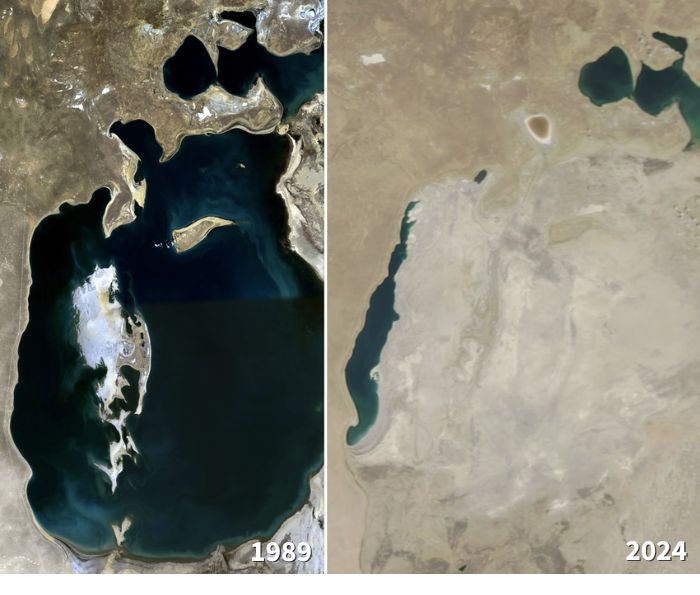 The Aral Sea as seen from satellites in 1989 compared to 2024. (NASA)
The Aral Sea as seen from satellites in 1989 compared to 2024. (NASA)"It is certainly one of the biggest environmental disasters in the world," Ibrahim Thiaw, Executive Secretary of the United Nations Convention to Combat Desertification, said last year.
Studies have found the loss of this inland sea nearly doubled the region's atmospheric dust between 1984 and 2015, from 14 to 27 million metric tons.
frameborder="0″ allow="accelerometer; autoplay; clipboard-write; encrypted-media; gyroscope; picture-in-picture; web-share" referrerpolicy="strict-origin-when-cross-origin" allowfullscreen>
The airborne former lakebed has reduced air quality in neighboring cities, even as far as 800 kilometers (500 miles) away, and is contributing to the acceleration of glacial melt. This is then further exacerbating the region's water crisis.
Storms spread these damaging salts, destroying crops hundreds of kilometers away, and contaminating drinking water.
Aralkum's dust is particularly toxic compared to the rest of the region's desert dust because it contains runoff from nearby USSR chemical weapons testing and is full of fertilizers and pesticides from the same mass agricultural practices responsible for draining the Aral Sea.
frameborder="0″ allow="accelerometer; autoplay; clipboard-write; encrypted-media; gyroscope; picture-in-picture; web-share" referrerpolicy="strict-origin-when-cross-origin" allowfullscreen>
Between the 1960s and 1990s, the Amu Darya and Syr Darya rivers that flowed from the mountains to supply the lake were redirected to irrigate 7 million hectares (1.7 million acres) of cotton fields for the Soviet Union.
The massive-scale irrigation that's continued since in various forms rapidly reduced the lake, eventually splitting it into two slithers, and connecting its hundreds of islands to their surrounding banks.
Salinity concentrations in the remaining water increased to levels higher than the ocean, destroying most of the native life within and collapsing the local ecosystem. This destroyed the livelihoods of many people, as illustrated by the rusted fishing boats now strewn across the arid sands.
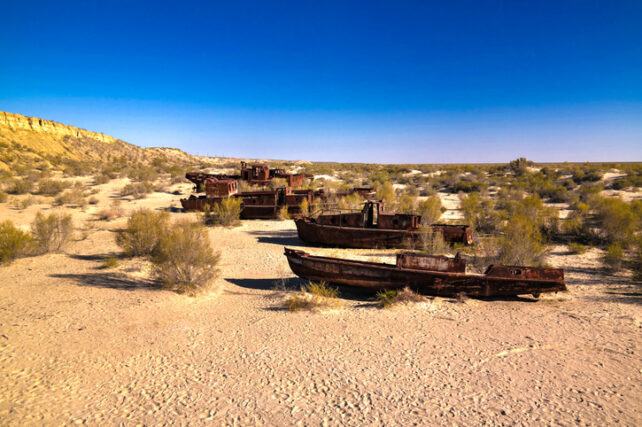 Ship cemetery near Moynaq, Uzbekistan. (HomoCosmicos/iStock/Getty Images Plus)
Ship cemetery near Moynaq, Uzbekistan. (HomoCosmicos/iStock/Getty Images Plus)Exposure to the dust has been linked to health issues in adults and children in the region, including increased congenital defects. In an effort to contain the toxic dust, regional governments have been working on vegetating the former lakebed, with local scientists searching for plants hardy enough to tolerate the salty soil.
The EU and USAid have recently offered assistance for this mass undertaking, but this is no longer assured.
What's happened to the Aral Sea isn't just some distant tragedy the rest of the world can afford to ignore, as the same circumstances are being repeated globally. Lakes and other land-based water systems in Africa, the Middle East, Europe, Australia, and the US are all shrinking due to industrialized agricultural and climate pressures.
The Aral Sea is a stark warning of the deadly and complex consequences of failing to prioritize enough water for the local environment.

 3 hours ago
5
3 hours ago
5 